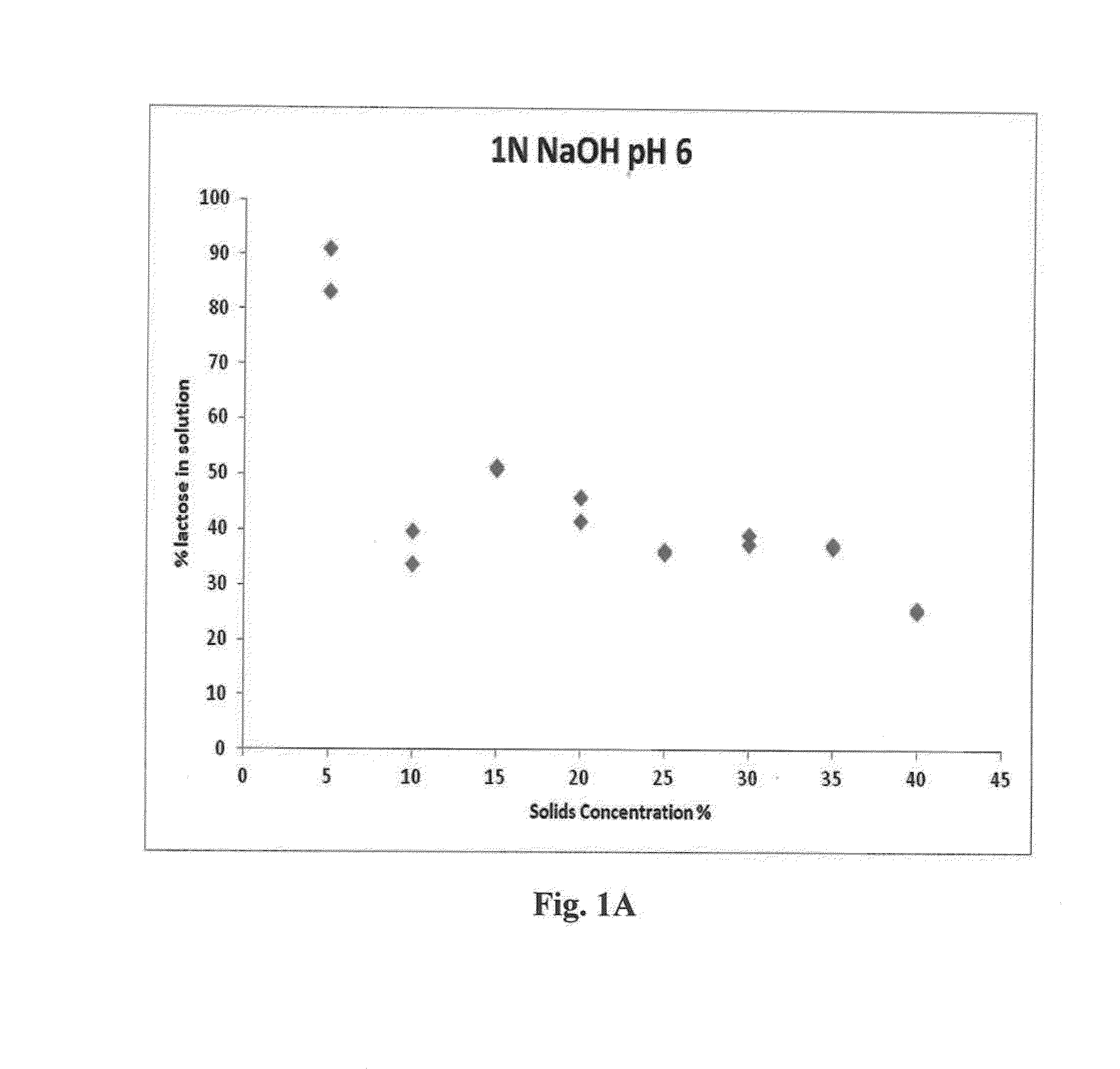Methods For Processing Acid Whey
a technology of acid whey and processing method, which is applied in the field of methods for processing acid whey, can solve the problems of acid whey's hygroscopicity and stickiness, acid whey's very difficult processing, and the use of acid whey is currently hampered by its hygroscopicity and stickiness
- Summary
- Abstract
- Description
- Claims
- Application Information
AI Technical Summary
Benefits of technology
Problems solved by technology
Method used
Image
Examples
examples
[0025]Optimization of the acid whey hydrolysis treatment was done in two steps. First, the lactase (e.g., β-galactosidase) enzyme concentration was optimized using powdered acid whey (dry acid whey, Friendship Dairies, Friendship, N.Y.) prepared in two concentrations with water; 7% solids (similar to sweet whey production) and 30% solids at their natural pH of 4.2. Lactose reduction of acid whey (starting material acid whey contains approximately 68% lactose by weight) was accomplished through hydrolysis using β-galactosidase (American Laboratories Incorporated, Omaha, Nebr.) with an activity of 5,000 ALU / g with a usage rate of 4 g lactose to 250 mg of β-galactosidase at 25° C. and 40° C. Hydrolysis treatment occurred in a beaker with continuous stirring in a water bath (Isotemp Model 2322, Fisher Scientific, Debuque, Iowa) set to the desired treatment temperature between 25° C. and 40° C. Five ml samples were removed at 5 minute intervals between 0 and 30 minutes, and 1 ml of 1M so...
PUM
 Login to View More
Login to View More Abstract
Description
Claims
Application Information
 Login to View More
Login to View More - R&D
- Intellectual Property
- Life Sciences
- Materials
- Tech Scout
- Unparalleled Data Quality
- Higher Quality Content
- 60% Fewer Hallucinations
Browse by: Latest US Patents, China's latest patents, Technical Efficacy Thesaurus, Application Domain, Technology Topic, Popular Technical Reports.
© 2025 PatSnap. All rights reserved.Legal|Privacy policy|Modern Slavery Act Transparency Statement|Sitemap|About US| Contact US: help@patsnap.com



